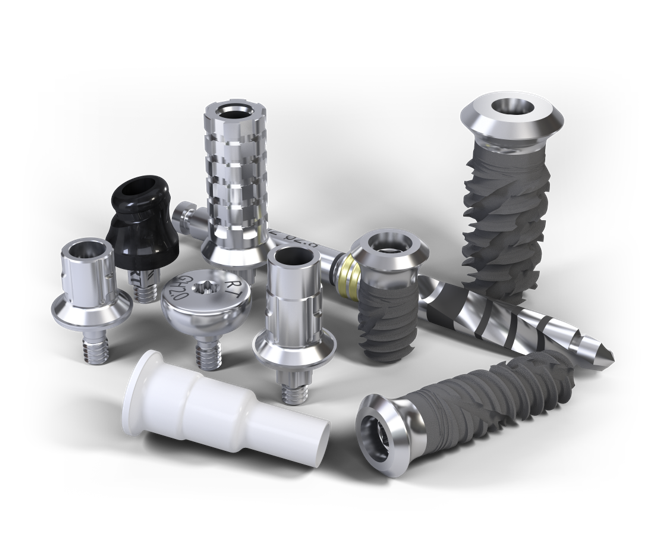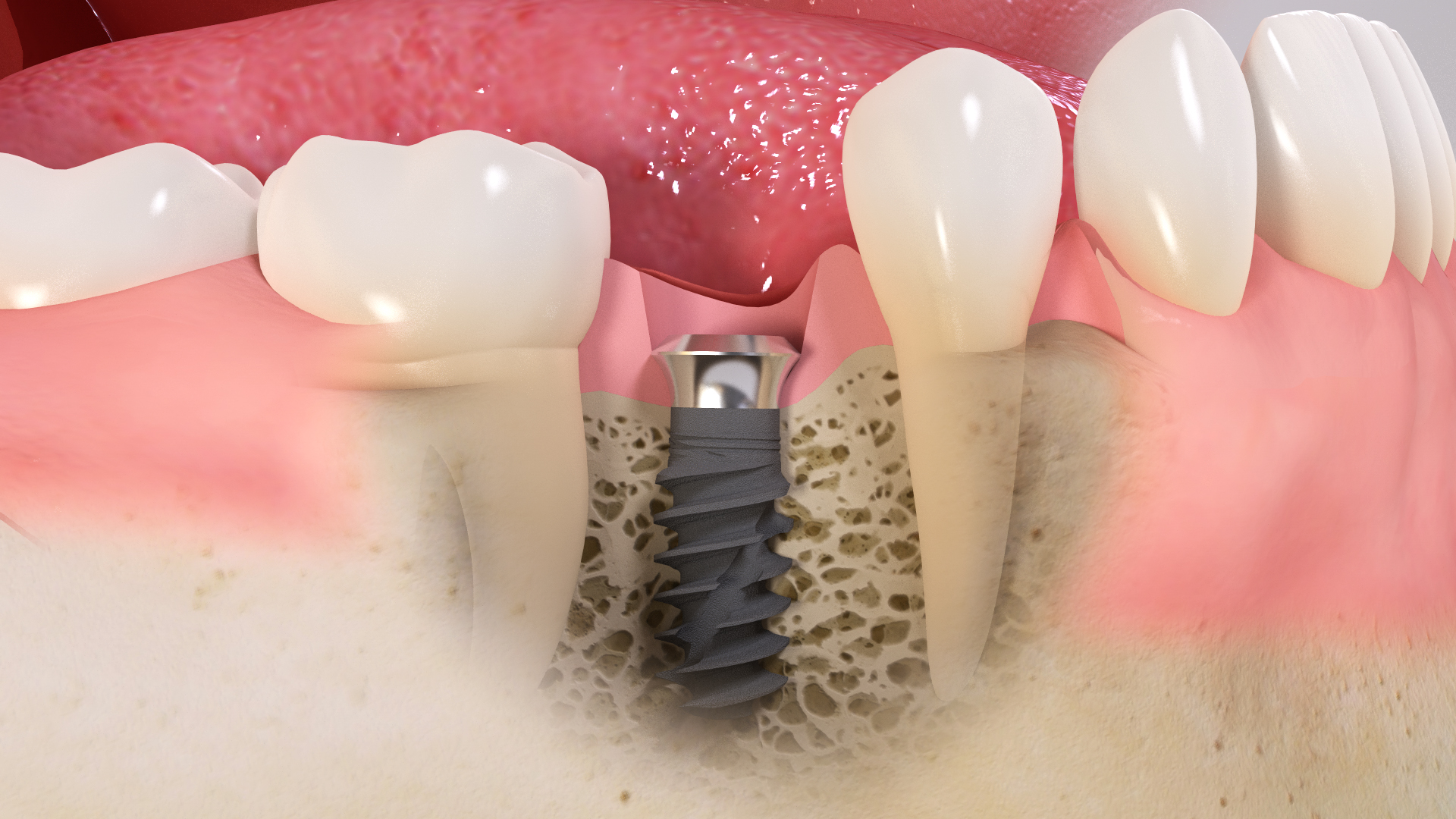Decisions, decisions
Featured Products Promotional FeaturesPosted by: Dental Design 29th August 2021

Several factors may affect surgical and restorative outcomes, including the quality of the solutions themselves, the implant placement technique, the experience of the clinician and the patient’s compliance with maintenance protocols. With a plethora of implant systems and components now available on the market, careful product selection is key to treatment success. The right solutions are integral to optimising clinical results, while also ensuring a positive patient and practitioner experience. Among the decisions to be made is the choice between bone or tissue level implants.
Confident product selection
To have complete confidence in the solutions selected for each case, you need to work with systems that are backed by science. The use of only evidence-based products will also show patients that they can trust in the quality of treatment they will receive, emphasising the value of their investment and encouraging treatment acceptance.
Aside from research supporting the safety and effectiveness of solutions, the reputation of the brand and feedback from other users should be considered. Honest reviews from colleagues will provide insight into whether an implant system may be right for you. These will also commonly provide useful tips and advice for maximising on the features available and therefore optimising outcomes.
Building a personal armamentarium
In many cases, you will achieve the best outcomes when using implant systems and components you have some practical experience with. Knowing how products work and how they might benefit particular patients will enhance both the case selection and treatment planning processes for more predictable results. This means that each clinician needs to build their own armamentarium of core products that they use in the vast majority of their implant cases.
It is important to find a balance that provides access to a broad range of products that is streamlined enough to enable efficient and simplified workflows. It can be beneficial to look for flexible systems that meet various clinical requirements and indications, and which are compatible with several different components. For example, consider using both a bone level and tissue level implant system from the same provider – especially if both systems are compatible with the same components. This versatility will not only enhance ordering efficiency, but it will also likely be much more cost-effective.
Once you have a go-to range of solutions you feel comfortable with, selecting the right items for each individual case should become simpler. The clinical demands of a case, combined with the patient’s desires and expectations, will determine which products are best suited to delivering the required outcomes.
Bone vs. tissue level
As already mentioned, among the many possible variants, it is important to decide between a bone or tissue level implant. Traditionally, bone level implants have provided a solution in aesthetically demanding cases. Studies show that both immediate and early implant placement protocols using bone level implants result in good aesthetic, clinical and patient-centred outcomes.[i] There is also evidence of excellent clinical and radiographic results after 3 years for single unit bone level implants when either a submerged or transmucosal technique is utilised.[ii]
Tissue level implants have been developed to enable one-stage surgery that optimises healing and patient comfort. These have also been found to offer high implant and prosthetic success rates, even after 10 years.[iii] In addition, research suggests that tissue level implants with an SLA® surface are at lowest risk of developing peri-implantitis after 9 years.[iv]
Both bone and tissue level implants have been associated with minimal bone loss.[v] A 2012 systematic assessment found no statistically relevant difference in survival rates between each type of implant, 1-3 years post-op.[vi]
 Latest generation products
Latest generation products
To elevate your implant procedures, it is important to update your armamentarium with the latest solutions when appropriate. That means trying new generation products as they become available to see how you and your patients would benefit from the upgrade. For instance, Straumann® is introducing the new TLX implant system – where tissue level meets immediacy. It has been designed to mimic the natural anatomy and respect the biological distance in all dimensions for ideal soft tissue conditioning and aesthetics. While perfected for immediate placement protocols, it still supports conventional placement and loading procedures for greater flexibility, giving you total peace of mind. It also uses the same drill set and TorcFit™ connection as the Straumann® BLX bone level implant for maximum simplicity and efficiency.
Putting patient care first
At the end of the day, every decision you make for each patient’s implant treatment will influence the clinical success achieved and their satisfaction with your services. Making the right choices and selecting the most suitable products for every case is crucial. Ensure you have an effective range of evidence-based solutions at your disposal to make the process that much easier.
For more information on the new Straumann® TLX implant system, please visit www.straumann.com
[i] Esthetic, clinical and patient-centered outcomes of immediately placed implants (Type 1) and early placed implants (Type 2): preliminary 3-month results of an ongoing randomized controlled clinical trial. Huynh-Ba G, Meister DJ, Hoders AB, Mealey BL, Mills MP, Oates TW, Cochran DL, Prihoda TJ, McMahan CA. Clin Oral Implants Res. 2016 Feb;27(2):241-52
[ii] Sanz M, Ivanoff CJ, Weingart D, Wiltfang J, Gahlert M, Cordaro L, Ganeles J, Bragger U, Jackowski J, Martin WC, Jung RE, Chen S, Hammerle C. Clinical and radiologic outcomes after submerged and transmucosal implant placement with two-piece implants in the anterior maxilla and mandible: 3-year results of a randomized controlled clinical trial. Clin Implant Dent Relat Res. 2015 Apr;17(2):234-46. doi: 10.1111/cid.12107. Epub 2013 Jul 9. PMID: 23837502.
[iii] Amorfini L, Storelli S, Mosca D, Scanferla M, Romeo E. Comparison of Cemented vs Screw-Retained, Customized Computer-Aided Design/Computer-Assisted Manufacture Zirconia Abutments for Esthetically Located Single-Tooth Implants: A 10-Year Randomized Prospective Study. Int J Prosthodont. 2018 July/August;31(4):359–366. doi: 10.11607/ijp.5305. Epub 2018 Apr 6. PMID: 29624628.
[iv] Derks J, Schaller D, Håkansson J, Wennström JL, Tomasi C, Berglundh T. Effectiveness of Implant Therapy. Analyzed in a Swedish Population: Prevalence of Peri-implantitis. J Dent Res. 2016 Jan; 95(1):43-9. (Doctoral thesis reference: ISBN 978-91-628- 9491-7).
[v] Kumar VV, Sagheb K, Kämmerer PW, Al-Nawas B, Wagner W. Retrospective Clinical Study of Marginal Bone Level Changes with Two Different Screw-Implant Types: Comparison Between Tissue Level (TE) and Bone Level (BL) Implant. J Maxillofac Oral Surg. 2014;13(3):259-266. doi:10.1007/s12663-013-0532-5
[vi] Vouros, Ioannis & Kalpidis, Christos & Horváth, Attila & Petrie, Aviva & Donos, Nikolaos. (2012). Systematic Assessment of Clinical Outcomes in Bone-Level and Tissue-Level Endosseous Dental Implants. The International journal of oral & maxillofacial implants. 27. 1359-74.








